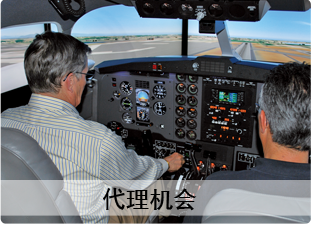中国通航新政策出台 航空器引进有望提速
EASIER AIRCRAFT INTRODUCTIONS EXPECTED AFTER CAAC RELEASES NEW POLICIES
2013-8-28 16:01

中国民用航空局(Civil AviationAdministration of China,简称“民航局”)修订印发的《引进通用航空器管理暂行办法》的通知已于2012 年12 月下发到各通航相关企业,新办法规定,只要通过各地区民航管理局审批,国内买家即可引进航空器,此前这一审批权只能由民航最高主管部门中国民航局掌握。
业内行业人士认为该《引进通用航空器管理暂行办法》,有4大亮点:
1、一般通用航空器引进只要地区管理局备案;
2、任何自然人可以申请引进任何航空器,包括公务机;
3、一般航空器转让不再买方办理批文,公务机除外;
4、符合要求的需要在10 个工作日内出结果。
新政策很给力,通航发展还有一个非常重要的关键点那就是空域改革,民用航空飞行高度一般在6000米以上,低空空域指的是1000 米以下的飞行区域。在2009 年的全国低空空域管理改革研讨会上,有关方面提出将1000 米以下的空域分为3 类:管制空域、监视空域、报告空域。从2013 年起,航空管制将放松,低空空域开放的力度将在全国铺开,湖北等中南地区5 省37 片空域将开放。这对通航对整个中国经济的发展都具有重要的意义。
国家空管委主任朱时才表示,从2013 年开始,将在全国范围逐步推开低空空域管理改革,逐步形成政府监管、行业指导、市场化运作、全国一体化的低空空域运行管理和服务保障体系。
按照空管委的决策部署,中国低空空域管理改革试点目前已经扩大到整个东北地区、中南地区,以及唐山、西安、青岛、杭州、宁波、昆明、重庆等地,即“两大区、七小区”。经过两年多的改革试点和经验积累,未来中国通航将展开更为全面和力度更 大的发展步伐。
The revised Interim Measures Regarding the Administration of the Introduction of General Aviation Aircraft was released by the Civil Aviation Administration of China ("CAAC",) and has subsequently been issued to each of the General Aviation related enterprises. According to the regulation, domestic buyers are permitted to introduce aircraft if examined and endorsed by the corresponding regional administration departments. It is well-known however, that even before the examination and approval, the final authority on the introduction of the aircraft is up to the CAAC.
Some professionals involved in this industry believe there are four parts within this new regulation that attract attention:
1.Some professionals involved in this industry believe there are four parts within this new regulation that attract attention:
2. A Natural person can make an application to introduce any aircraft, including a business jet.
3. Prospective buyers of aircraft are no longer required to apply for an approval when transfering his own aircraft, unless the aircraft is a new one.
4. The authority is required to give a written reply within 10 working days after receiving a properly qualified aircraft introduction plan.
This new policy is very exciting! While the key point in the development of general aviation is airspace reform, the altitude of airspace used by civil aviation is generally above 6 km high, and the low-altitude airspace refers to that which is lower than 1 km high. At the seminar on the reform of the nation's low-altitude airspace, some authorities proposed the airspace lower less than 1 km be divided into three parts: airspace which is under control, airspace which is under surveillance, and those areas where aircraft can fly freely after reporting their flight plans in advance. Great significance to the development of the whole economy of the nation is being credited to the fact that, the air traffic control toward General Aviation will be slackened beginning in the year 2013, and the new dimension of opening up the low-altitude airspace will be implemented all over the nation, within 37 areas of airspace, in 5 different provinces, including the projected opening of Hubei.
Mr. Shicai Zhu, the director-general of the State Air Traffic Control Commission, has stated that, beginning with the year 2013, the low-altitude airspace reform will be brought into practice within the entire nation. Furthermore, a market-oriented operation will gradually be formed, featuring an integrated security system regarding the care and administration of low-altitude airspace, with oversight from the government, and guidance from the community of the General Aviation Industry.
According to the decisions, and the arrangements made by the State Air Traffic Control Commission, experimental sites for China's low-altitude airspace have been expanded throughout Northeast China, Central-Southern China, and include Tangshan, Xi'an, Qingdao, Hangzhou, Ningbo, Kunming, Chongqing, along with several other communities. After having implemented the new low altitude policy within those experimental sites for over two years, those sites have become commonly referred to as "the two large regions, and the seven small regions." This experiment has allowed China’s Aviation Officials to gain a vast amount of experience regarding the reform and administration of its low-altitude airspace, causing many Aviation experts to believe they will harvest even more experience in the future, while further developing its General Aviation, and expanding its comprehensive dimensions of airspace.


























